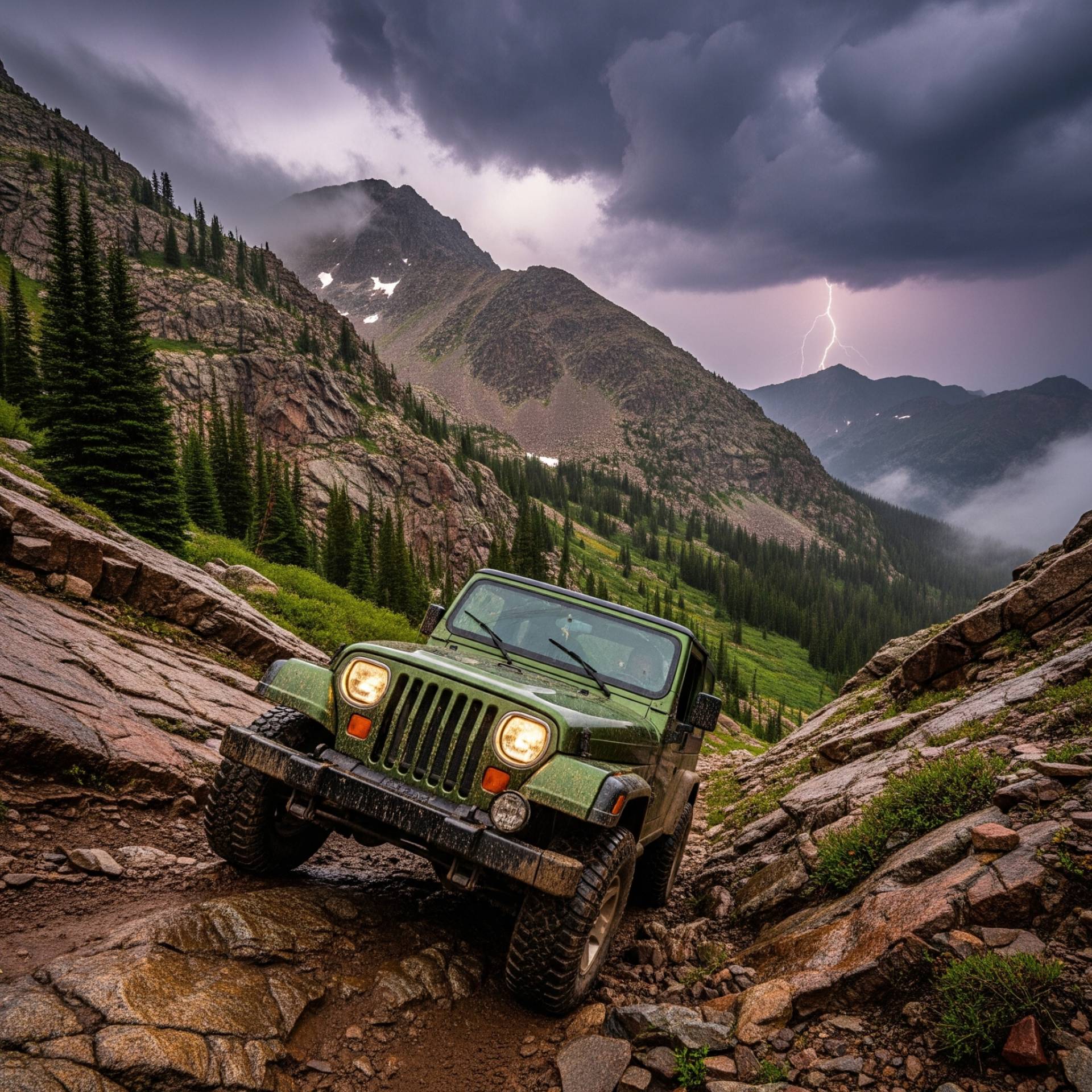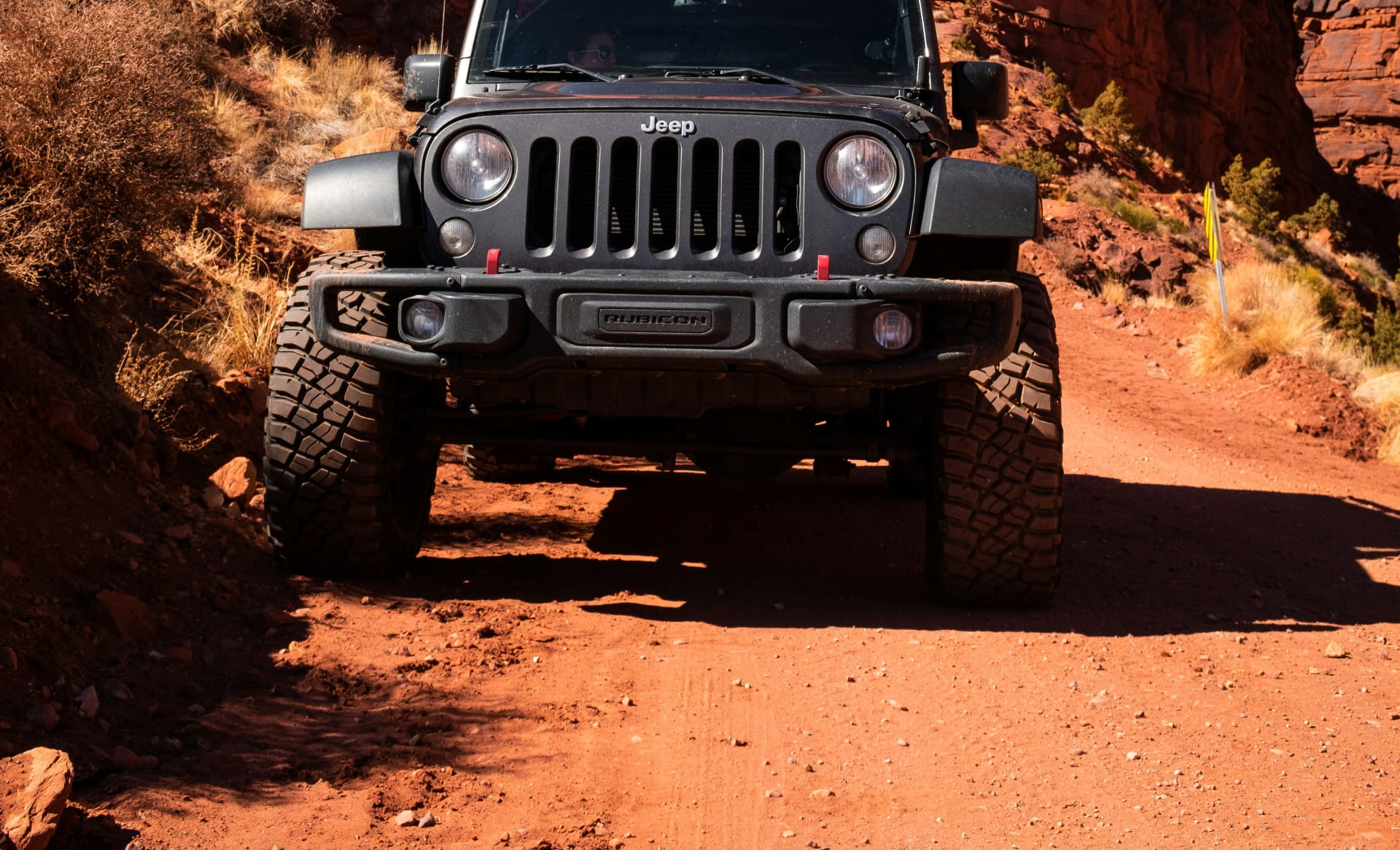Off Road Colorado: Ultimate 4x4 & Jeep Adventure Guide 2025
Here's what most people don't understand about off road Colorado: it's not just another state with dirt roads and scenic overlooks.
Colorado represents the intersection of geological time and modern adventure, where millions of years of mountain-building forces have created a playground that separates genuine off-road enthusiasts from weekend warriors who think lifted trucks and aggressive tires automatically qualify them for serious backcountry exploration.
The numbers tell the story differently than Instagram posts suggest. Colorado maintains over 2,000 miles of designated off-road trails across elevations ranging from 5,000 to 13,000+ feet above sea level.
These aren't neighborhood fire roads—they're routes that demand specific technical skills, properly modified vehicles, and understanding of high-altitude conditions that catch unprepared adventurers off-guard in expensive and potentially dangerous ways.
The reality check: Most people experience less than 5% of what off road Colorado actually offers because they're unprepared for the technical demands, altitude effects, and weather variables that make Colorado's backcountry fundamentally different from lower-elevation off-roading in other states.
Why Colorado's Altitude Changes Everything
Think about this: at 12,000 feet elevation, the air contains roughly 40% less oxygen than at sea level. Your naturally aspirated engine loses approximately 3% of its power for every 1,000 feet of elevation gain. This means that Jeep Wrangler making 285 horsepower at sea level produces only about 185 horsepower at typical Colorado pass elevations.
The Bottom Line: Vehicles that perform adequately at lower elevations often become underpowered and sluggish at Colorado's high-altitude trail destinations, requiring different driving techniques and realistic expectations about vehicle performance.
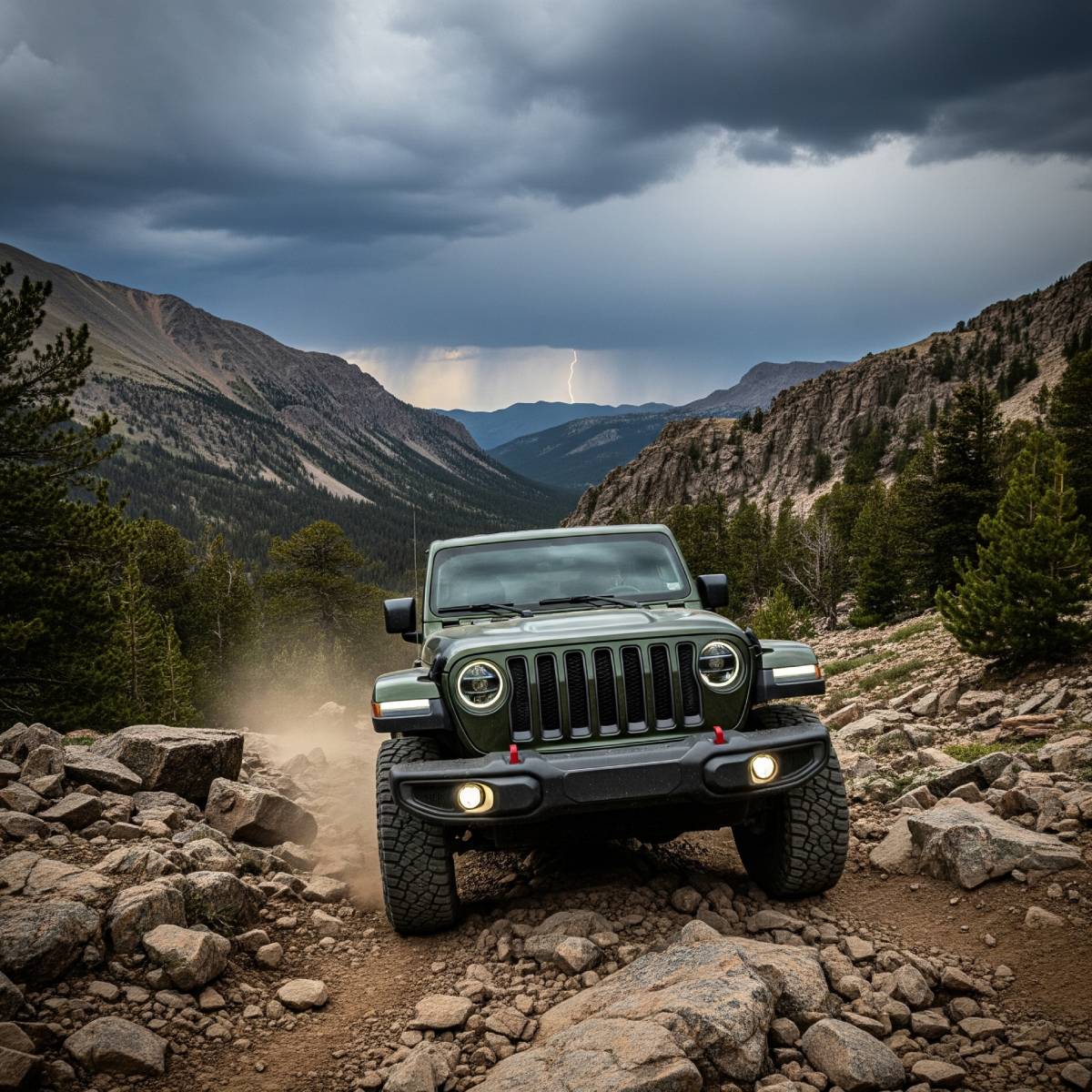
Atmospheric Pressure and Engine Tuning
Modern fuel-injected vehicles adjust automatically for altitude changes, but the compensation has limits that become apparent on sustained climbs above 10,000 feet.
Carbureted vehicles require manual adjustments or suffer from rich fuel mixtures that reduce power and increase fuel consumption when atmospheric pressure drops significantly.
Pro Tip: Turbocharged engines maintain power output better at altitude because forced induction compensates for reduced air density, making them particularly effective for high-altitude off road Colorado adventures.
Human Performance at Altitude
Altitude affects drivers and spotters as much as it affects vehicles. Reduced oxygen levels cause fatigue, impaired judgment, and slower reaction times that become dangerous factors when navigating technical terrain requiring precise decision-making and quick responses to changing conditions.
Quick Reality Check: If you live at sea level and immediately attempt technical trails above 10,000 feet, expect reduced performance from both yourself and your vehicle until acclimatization occurs over several days.
The Trail Systems That Define Off Road Colorado
The San Juan Mountain region contains the highest concentration of technical off road Colorado trails in the state, with routes that climb above treeline into alpine environments that exist nowhere else in the continental United States. These aren't casual weekend drives—they're full-commitment adventures requiring proper preparation and respect for conditions that can turn lethal when weather changes rapidly.
Engineer Pass: Technical Assessment
Engineer Pass connects Ouray and Lake City via a 12,800-foot summit that requires vehicles to navigate sustained technical climbing, off-camber sections, and exposure that makes mistakes visible from miles away.
The route serves as an excellent barometer of vehicle capability and driver skill before attempting more challenging San Juan trails.
Technical Requirements:
Ground clearance: 10+ inches minimum for undercarriage obstacles
Approach/departure angles: 35+ degrees for ledge navigation
Low-range gearing: Essential for maintaining control on steep grades
Recovery equipment: Required for self-extraction in remote locations
The Bottom Line: Engineer Pass eliminates vehicles and drivers who aren't prepared for sustained technical difficulty at high altitude—success here indicates readiness for other San Juan challenges.
Imogene Pass: High-Altitude Reality Check
At 13,114 feet, Imogene Pass represents one of the highest vehicle-accessible routes in North America. The elevation creates conditions that most off-road enthusiasts never experience: temperatures that can drop 40 degrees from base to summit, weather that changes from clear to dangerous within minutes, and atmospheric conditions that affect both human and mechanical performance significantly.
Elevation Effects on Performance:
Engine power reduction: 35-40% compared to sea level output
Tire pressure changes: 1 PSI decrease per 2,000 feet elevation gain
Human reaction time: 15-20% slower due to oxygen reduction
Weather volatility: Afternoon thunderstorms develop rapidly above treeline
Black Bear Pass: Expert-Only Territory
Black Bear Pass earned its reputation through decades of humbling overconfident drivers who mistake dramatic scenery for casual difficulty.
The route combines extreme off-camber sections, tight switchbacks, and exposure that makes recovery from mistakes complicated and expensive.
Why Black Bear Separates Experts from Pretenders:
The trail maintains sustained technical difficulty without easier sections that allow drivers to recover from poor decisions or equipment inadequacies. Every quarter-mile presents obstacles that require precise execution, with limited opportunities for turning around when situations exceed driver or vehicle capabilities.
Common Misconceptions About Black Bear Pass:
"Any Jeep can handle it." - Reality: Stock vehicles lack the ground clearance, articulation, and traction systems necessary for safe completion.
"It's just a scenic drive with some challenging spots." - Reality: The entire route demands technical competency with consequences for mistakes that extend beyond minor embarrassment.
Rocky Mountain National Park Region
While the national park itself restricts vehicle access to preserve fragile alpine ecosystems, surrounding national forest lands offer extensive off road Colorado opportunities that provide access to similar high-altitude environments without park restrictions.

Fall River Road: Historical Engineering
This historic route, originally built as the first road across the Continental Divide, demonstrates early automotive engineering attempts to conquer Colorado's mountain challenges.
The gravel road climbs to 11,796 feet through ecosystems ranging from montane forests to alpine tundra.
Educational Value: Fall River Road teaches important lessons about vehicle preparation for extended high-altitude driving, including cooling system management, transmission temperatures, and the effects of sustained climbing on mechanical systems.
Old Fall River Road: One-Way Adventure
The one-way uphill restriction on Old Fall River Road creates unique traffic flow that prevents the typical off-road problems of oncoming vehicles on narrow mountain roads.
The route provides excellent training for altitude effects and mountain driving techniques without the extreme technical challenges of more difficult trails.
Understanding Colorado's Geological Challenges
Granite Formations Colorado's granite provides excellent traction when dry but becomes treacherously slippery when wet. The crystalline structure creates surfaces that grip aggressive tire compounds effectively while punishing drivers who attempt technical sections during or immediately after precipitation.
Sandstone Characteristics Sandstone formations in western Colorado behave similarly to those found in Utah's famous red rock country, providing good traction on clean surfaces while becoming nearly impossible to navigate when covered with dust or moisture.
Shale and Loose Rock Shale formations create some of Colorado's most challenging off-road conditions, with surfaces that shift unpredictably under vehicle weight and provide minimal traction even with specialized tires designed for loose surfaces.
The Bottom Line: Understanding rock types helps predict traction characteristics and choose appropriate routes based on current weather conditions and vehicle capabilities.
Seasonal Variations That Affect Trail Conditions
Spring Conditions (April-June) Spring provides optimal conditions for most off road Colorado adventures, with moderate temperatures, stable weather patterns, and trail access that improves as snowmelt progresses.
However, spring also brings mud season, when certain trails become impassable due to saturated soils that create environmental damage and stuck vehicles.
Summer Challenges (July-September) Summer offers the longest days and most reliable weather, but also brings afternoon thunderstorms that can transform dry creek beds into dangerous flash flood zones within minutes.
The combination of intense UV exposure at high altitude and potential for rapid weather changes requires preparation that many lower-elevation off-roaders haven't considered.
Fall Opportunities (September-October) Autumn provides spectacular scenery with aspen colors, but also creates urgency as high-altitude passes begin closing with early winter weather. The shortened daylight hours require earlier starts and more conservative route planning.
Winter Limitations (November-March) Winter off-roading in Colorado requires specialized equipment, avalanche awareness, and acceptance of significantly increased risk factors that make it unsuitable for most recreational enthusiasts. Snow and ice transform already challenging trails into extreme technical challenges.
Vehicle Requirements That Actually Matter
Minimum Requirements by Trail Difficulty:
Easy trails: 8+ inches measured at lowest point
Moderate trails: 10+ inches with skid plate protection
Difficult trails: 12+ inches with comprehensive armor
Expert trails: 14+ inches with custom protection systems
Reality Check: Manufacturer specifications typically measure unloaded vehicles, while trail conditions require measurements with full fuel, gear, and passenger loads that reduce effective clearance by 2-4 inches.
Wheelbase Considerations for Colorado Terrain
Short Wheelbase Advantages:
Better breakover angles for ledge obstacles
Improved maneuverability in tight switchbacks
Reduced high-centering risk on uneven surfaces
Enhanced approach and departure angle performance
Long Wheelbase Challenges:
Increased likelihood of high-centering on obstacles
Difficulty navigating tight mountain switchbacks
Reduced flexibility over uneven terrain
Higher risk of contact damage on steep approaches
The Bottom Line: Short wheelbase vehicles (under 100 inches) handle Colorado's technical terrain more effectively than longer vehicles, regardless of other modifications or capabilities.
Drivetrain Requirements for High-Altitude Performance
Low-Range Transfer Case Necessity Low-range gearing becomes essential rather than optional when attempting sustained climbs at high altitude where engine power decreases significantly.
The reduced atmospheric pressure that affects engine output makes precise speed control through gearing mandatory for maintaining traction and preventing overheating.
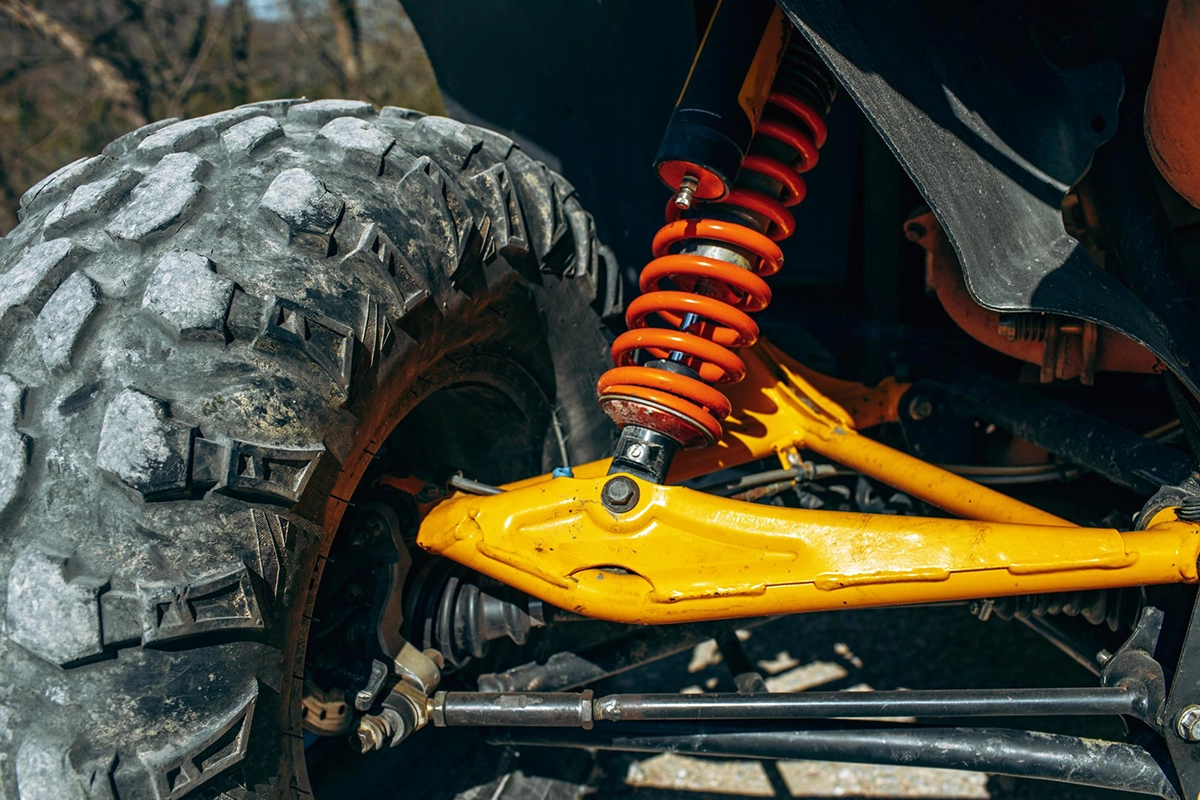
Differential Locking Systems Front and rear locking differentials provide the single most important modification for off road Colorado success, allowing vehicles to maintain forward progress when individual wheels lose traction on varied surfaces common in mountain terrain.
Recommended Gear Ratios:
Stock vehicles: 4:1 low-range minimum
Modified vehicles: 4.5:1 or lower for optimal control
Extreme terrain: 6:1+ ratios for technical rock crawling
Professional Rental Services: The Smart Alternative
Why Cliffhanger Jeep Rentals Makes Sense for Colorado Adventures
Attempting serious off road Colorado trails in personal vehicles creates multiple complications that professional rental services eliminate: insurance coverage limitations for off-road damage, storage and transportation challenges for specialized equipment, and the significant investment required for modifications that may be used only occasionally.
Purpose-Built Fleet Advantages
Cliffhanger Jeep Rentals operates vehicles designed specifically for Colorado's challenging terrain, with modification combinations proven through thousands of miles of technical trail use rather than theoretical specifications that sound impressive but haven't been tested under real-world conditions.
Comprehensive Modification Packages:
Suspension systems designed for Colorado's specific terrain
Armor protection based on actual contact points and damage patterns
Tire selections optimized for Colorado's mixed surface conditions
Recovery equipment sized and positioned for real-world use scenarios
Local Expertise That Prevents Expensive Mistakes
Trail Condition Intelligence Professional rental operations maintain current information about trail conditions, seasonal closures, and temporary hazards that aren't reflected in guidebooks or online resources. This intelligence prevents wasted trips and dangerous situations when conditions change rapidly.
Vehicle-Specific Route Matching Experienced rental services understand which vehicles handle specific trails effectively and can recommend appropriate routes based on customer experience levels and current trail conditions rather than optimistic assessments about capability.
Insurance and Liability Protection Personal vehicle insurance policies typically exclude coverage for off-road activities, leaving owners responsible for expensive repairs and recovery costs when technical trails exceed vehicle or driver capabilities.
Planning Successful Off Road Colorado Adventures
Common Time Estimation Errors: Most people underestimate the time required for technical off road Colorado trails by 200-300%, planning 4-hour adventures that actually require 8-12 hours when accounting for obstacle navigation, route finding, and the slower pace that technical terrain demands.
Factors That Affect Completion Times:
Group size and experience levels
Current trail conditions and seasonal variations
Vehicle preparation and modification levels
Weather conditions and visibility factors
Recovery time for stuck or damaged vehicles
Weather Monitoring and Contingency Planning
48-Hour Weather Window Colorado's mountain weather requires monitoring conditions 48-72 hours in advance rather than same-day assessments that work for lower-elevation off-roading. Afternoon thunderstorms can develop rapidly above treeline, creating lightning hazards and slippery surface conditions.
Alternative Route Planning Successful Colorado off-road trips require backup plans when primary routes become unsuitable due to weather, trail conditions, or equipment problems that develop during multi-day adventures.
Group Dynamics and Safety Protocols
Optimal Group Composition 2-3 vehicles provide the best balance between safety redundancy and manageable group coordination. Larger groups create communication challenges and slower progress on technical sections, while single-vehicle attempts eliminate safety margins that mountain terrain demands.
Required Skills per Vehicle:
Driver with demonstrated technical experience
Spotter capable of reading terrain and communicating effectively
Navigator with current maps and GPS backup systems
First aid training and emergency response capabilities
The Environmental Responsibility Factor
Alpine environments above treeline take decades or centuries to recover from damage caused by off-trail driving or irresponsible camping practices. The short growing seasons and harsh conditions at high altitude mean that tire tracks created today may remain visible for 50+ years.
Critical Protection Areas:
Alpine tundra above 11,000 feet elevation
Riparian zones near streams and water sources
Wildlife migration corridors and sensitive habitats
Archaeological sites with historical significance
Practical Implementation:
Stay on designated trails regardless of conditions
Pack out all waste including food scraps and gray water
Camp only in previously established sites below treeline
Minimize campfire impacts and follow current fire restrictions
Supporting Trail Maintenance and Access
Trail Stewardship Organizations Colorado's off-road trails require ongoing maintenance that depends on volunteer labor and financial support from user communities. Supporting organizations like Colorado Off-Road Trail and Vehicle Association (CORVA) helps maintain trail access and promotes responsible use practices.
User Fee Programs Many Colorado trails require user fees or permits that fund trail maintenance, environmental protection, and emergency services that benefit all off-road enthusiasts.
Making the Commitment to Serious Off Road Colorado Adventures
Building Technical Competency Successful off road Colorado adventures require progressive skill development through increasingly challenging trails rather than optimistic attempts at expert-level routes that exceed current capabilities. The altitude, terrain, and weather factors create complexity that demands systematic preparation.
Recommended Progression:
Local technical trails at lower elevations
Colorado moderate trails with escape routes
High-altitude routes with limited technical sections
Full technical challenges above treeline
Multi-day backcountry expeditions
Equipment Investment vs. Professional Services
The Total Cost Reality Properly modifying a personal vehicle for serious Colorado off-roading typically requires $15,000-30,000+ in modifications, plus ongoing maintenance costs that reflect accelerated wear from technical terrain use. Professional rental services provide access to purpose-built vehicles without the ownership complications.
Professional Service Advantages:
No long-term storage or maintenance responsibilities
Access to multiple vehicle types for different trail requirements
Comprehensive insurance coverage for off-road activities
Local expertise and current trail condition information
Emergency support and recovery services
The Bottom Line: Why Colorado Rewards Preparation
Off road Colorado adventures offer experiences that change how you understand both natural systems and personal capabilities.
The state's unique combination of high altitude, technical terrain, and dramatic weather variations creates challenges that reward thorough preparation while punishing overconfidence and inadequate equipment.
Success requires meeting Colorado's trails on their own terms rather than expecting them to accommodate your current skill level or vehicle capabilities.
The geological forces that created these obstacles operated over millions of years with consistency and power that make human timescales seem insignificant.
Whether you choose to develop the skills and acquire the equipment for personal vehicle adventures or partner with professional services like Cliffhanger Jeep Rentals for access to purpose-built vehicles and local expertise, the key lies in honest assessment of requirements versus current capabilities.
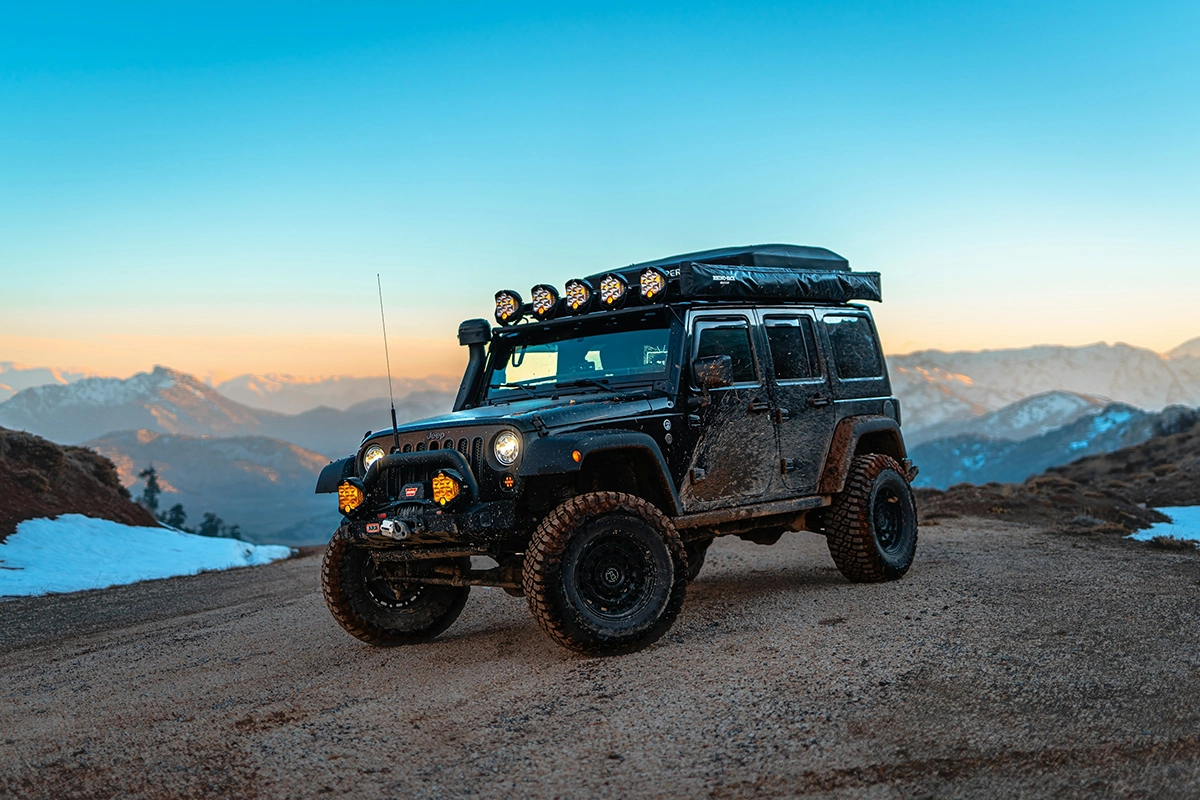
Remember: The most rewarding off road Colorado adventures come from meeting legitimate challenges through competent preparation rather than hoping enthusiasm and determination can substitute for proper equipment and developed skills.
Colorado's backcountry rewards those who approach it with appropriate respect while humbling those who mistake confidence for capability.
Ready to experience Colorado's backcountry the right way? Professional rental services provide the equipment, expertise, and support that transform challenging adventures into successful achievements while eliminating the risks and expenses that come with inadequate preparation.
The trails are waiting—but they'll only reveal their secrets to those willing to meet them with the respect and preparation they demand.

